#hoël ii
Photo
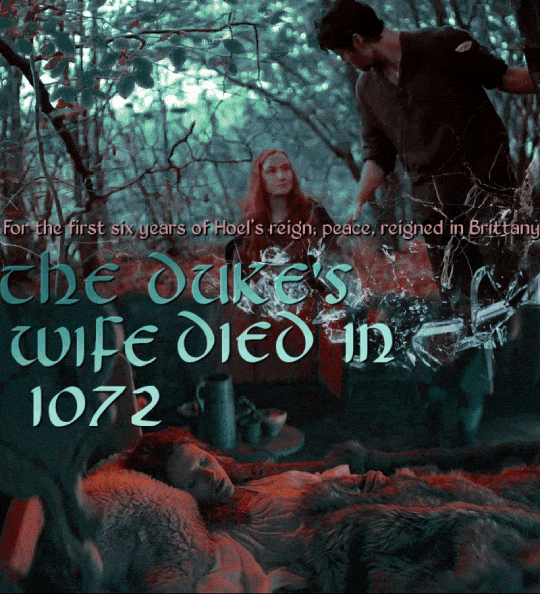


Hoël also showed himself to be an attentive and faithful husband: a widower at forty, after his wife had given him at least five children, he did not remarry; but he does not (apparently) take a concubine either, as J.-C. Cassard points out. Under the fine but still quite sharp pen of this author, whose seminal article helped to bring Hoël out of the shadows somewhat, this prince is nonetheless described as a dull character who suffered from events, in particular, from 1075-1076 and until 1077, the revolt of his barons, whose main military episodes were the sieges of Dol and Ancenis. This presentation, despite numerous very relevant notations, remains largely dependent on the historiography of the 19th century, in particular on the work of A. de La Borderie, particularly with regard to the pilgrimage to Rome made by Hoël, in order to “pray for the soul of his companion at the tomb of the apostles": this ducal journey would thus have taken place in 1072 at the latest in 1073, while certain Cornouaillais lords took advantage of the absence of their duke to revolt against him; however, B.-A. Pocquet du Haut-Jussé pointed out as early as 1928 that we have “no details on the cause or the result of this displacement”, the date of which is not precisely known...
Character and convictions manifest themselves immediately after the death of Princess Havoise: doubtless this disappearance aroused in Hoël an “existential” reflection, which he would have wished to submit to the recently elected pope; but instead of retiring to a monastery, a temptation to which his son Alain Fergant would eventually succumb, Hoël chose to continue living in the world to help apply in Brittany the principles of the reform desired by the new pontiff.
-André-Yves Bourgès, Propagande Ducale, Rèforme Grégorienne et Renouveau Monastique
#historyedit#eleventh century#hoël ii#hawiz de rennes#text in edit from Histoire de Bretagne by Arthur Le Moyne de La Borderie#my edit
20 notes
·
View notes
Text
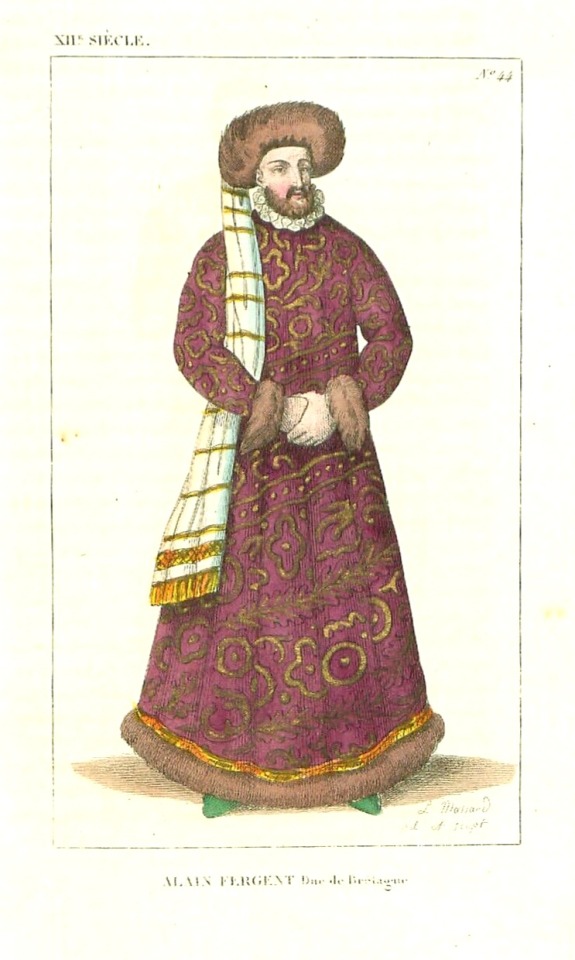
Alain Fergent, Duc de Bretagne.
Alain IV of Brittany (1060-1119), son of Hoël II of Brittany and Havoise of Brittany, was Count of Cornouaille, Rennes and Nantes and finally Duke of Brittany from 1084 to 1115.
#royaume de france#duché de bretagne#alain fergent#duc de bretagne#full length portrait#maison de cornouaille#duchy of brittany#duke of brittany#alain iv of brittany#full-length portrait#bretagne
4 notes
·
View notes
Photo

À travers le temps #10 Hoël Par ordre chronologique : Livre VI Episode II : Centurio (2009) Livre III Episode XXVI : L'assemblée des rois première partie (2006) #EddyLetexier #Kaamelott #Hoël #Armorique https://www.instagram.com/p/BsJBYlvF9rm/?utm_source=ig_tumblr_share&igshid=1bo2juskhb9wu
0 notes
Photo

#the text is ripped from Edouard Richer's Précis de l'Histoire de Bretagne#and just that bit lmao because some of it diverges just a little bit too far from modern scholarship for me to feel comfy including more#from left to right:#bertha de blois#konan ii#hawiz de rennes#hoël ii#eleventh century#shakespeareomnibus
14 notes
·
View notes
Photo




#they are flirting (with staph infection)#anyway. :>#hoël ii#hawiz de rennes#eleventh century#shakespeareomnibus
11 notes
·
View notes
Text
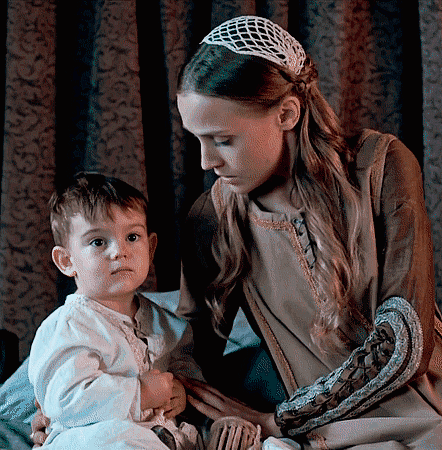
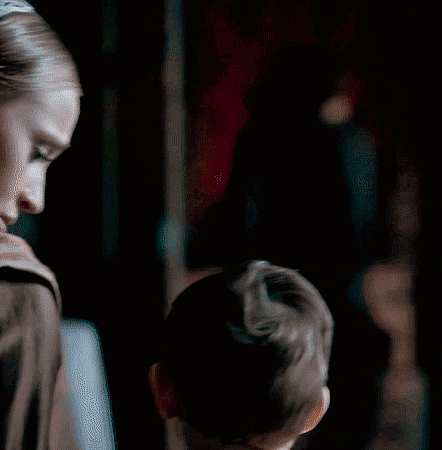
The name that Constance chose for her son predisposes him to his succession. The symbolic figure of King Arthur was reclaimed by Henry II. Amaury Chauou explains that the English King wishes to endow himself with “a conquering past and to legitimize his accession of the throne”. The objective is to compete with the sanctification of the Capetian dynasty through Charlemagne. This new cult of King Arthur is supported by so-called discoveries. Firstly, Arthur's sword, named Excalibur, is found in Glastonbury, converted into a sanctuary of English royalty. The tomb of Arthur was exhumed in 1191. The Arthurian legend experiences, at this period, a real renewal of interest and great success. This instrumentality is reversed by Constance. If Henry II reinvests the Arthurian figure to make it a protective king of his people, then the newborn symbolizes Bretons' hope fighting for their independence, which appears as a challenge in Henry II's eyes. By calling him that, Constance gave a certain power and value to the future title of her son. By selecting this name, she binds her son to kinship and honors. In fact, names identify kinship groups and belong to family patrimonies. But Constance did not name her son Alan, Conan, or even Hoël, common names of the dukes of Brittany in the high middle ages and also belong to a ducal heritage. Arthur’s name gives the future duke a symbolic value that is mythical, giving the Duke’s future title a superior, almost heroic and protective dimension.
-Élodie Chaudet, La duchesse Constance de Bretagne et le gouvernement en héritage à la fin du XIIe siècle
101 notes
·
View notes
Note
Hi! I'm not familiar with high medieval history but seeing your posts have made me super interested in certain historical figures of 11th century Brittany (specifically Hawise of Normandy, Bertha of Blois and Hawise of Rennes!!! Icons, all three of them)
It's really difficult to find information on their personal lives tho, so I wanted to ask: What kind of marriages did Geoffrey of Rennes & Hawise of Normandy and Hawise of Rennes & Hoel II have? I know that Bertha and Alan's seems to have been very loving, but I can't figure our anything for the other two.
Maybe I'm searching in the wrong places, so if there are any specific books that elaborate on them, please recommend! Thanks :)
Hello!
Thanks so much <3 and I agree! Those three lived in a really interesting period and their lives add really interesting context that I think makes them compelling to learn about :)
Unfortunately, historical evidence surrounding 11th century Brittany has a lot of gaps and omitted/lost information that makes it hard to tell for sure what certain relationships would have looked like and a lot of it has to be reconstructed with best guesses with the limited information we have.
I can only speak for what I've read, so if anyone has more resources or info they'd like to share feel free!
Regarding Hawise of Normandy and Geoffrey I, we don't really know a whole lot about their relationship as they were married in 996 and Geoffrey died in 1008 on pilgrimage to Rome. Joëlle Quaghebeur brings up an interesting angle regarding the double marriage of Hawise and Geoffrey and Richard II to Judith of Rennes as having marked differences in culture between the Bretons and Normans that affected how the two regions viewed the alliance, and my speculation is that it probably wouldn't be surprising if it bled into how the respective brides and grooms also viewed/interacted with each other.
We're given a pretty rosy image of their marriage: "This was the maiden, very beautiful in body and agreeable in morals and honesty: and why, after the paction of their friendships, Geoffrey asked that she be given to him, at Richard's will which Richard granted himself with agreeable courage and by assent of the Norman Princes gives her to him as a wife in the Christian manner." One of the difficult things about trying to figure even the events of the marriage though is that a lot of the finer details of it mostly come from Guillaume de Jumièges- a Norman chronicler- so we're left with a mainly one-sided narrative that is predisposed to the opinion that Normandy has suzerainty over Brittany which also needs to be taken into account when trying to parse things out. That being said, the marriage did do what it was intended to do: during Hawise's lifetime, Normandy and Brittany were bound in much closer defensive alliance against Anjou, so in that regard it's hard to consider it an unsuccessful one.
Some more resources on Hawise of Normandy:
Amy Livingstone, Pious Women in a “Den of Scorpions” The Piety and Patronage of the Eleventh-Century Countesses of Brittany
Joëlle Quaghebeur, Havoise, Constance, et Mathilde, princesses de Normandie et duchesses de Bretagne
Pierre Le Baud, Histoire de Bretagne, avec les Chroniques des maisons de Vitré et de Laval
Historical consensus on Hoël II and Hawise seems to be a lot more straightforwardly confident on calling it a genuinely affectionate marriage. Laurence Moal specifically mentions their marriage in her section on marriage dynamics within the ducal family as one offering the image of "perfect harmony". Hawise of Rennes was not as politically prominent as Hawise of Normandy was, so unfortunately we don't have much information on her specifically, but what we do have points to Hoël and Hawise having the typical experience of their time/status/region of marrying in their late teens or twenties and having a pretty good partnership.
I can't find hard dates for when Hoël and Hawise were born or when they were affianced, but it's likely that they married relatively young and there being no mention of Hoël having a concubine or illegitimate children, and he seems to have shown no inclination to take a mistress or remarry after Hawise's death. There is also the fact that Hoël seemed to have been deeply shaken by Hawise's death and the purpose of praying for her soul may have been one of the main factors motivating his decision to go on a pilgrimage to Rome in 1072.
More on Hawise and Hoël/Hoël's family:
Laurence Moal, Duchesses Histoire d'un pouvoir au féminin en Bretagne
Jean-Christophe Cassard, Houel, Huuel, Compte de Cornouaille puis duc de Bretagne (circa 1030-1084)
André-Yves Bourgès, Propagande Ducale, Rèforme Grégorienne et Renouveau Monastique
Joëlle Quaghebeur, La Cornouaille du IXe au XIIe siècle Mémoire, pouvoirs, noblesse
Joëlle Quaghebeur, Judith de Nantes, très pieuse, très noble, très sage comtesse de Cornouaille
If you're inclined to historical fiction, Hoël and Hawise also feature as side characters in The Wolf Hunt by Gillian Bradshaw
It's possible there may be sources I've missed, or new ones may come out later, so if you're still looking for things I recommend looking through the works cited of some of the above materials or seeing if someone else cited them. I apologize for the vagueness that is the middle ages, but I hope this was somewhat helpful!
2 notes
·
View notes
Photo

Hoël II bangin out the tunes :)
5 notes
·
View notes
Photo




Such an ambitious policy required sacrifices. Hoël was obliged to sacrifice his claim to the ducal title in favour of his sister. He is not known to have married, and his only known child became a nun at Saint-Sulpice-la-Forêt. In view of the significance of the name Hoël outlined above, and the Namur precedent, it may be that Conan intended to compensate his son with the county of Nantes for his life. Indeed, the subsequent conflict between Hoël and Bertha may have been limited to a dispute about the degree of Hoël's independence as count of Nantes.
Similarly, for Alan to succeed to the lordship of Penthièvre meant that one or both of Alan's brothers would have to designate him as their heir. In the 1120s, Stephen of Penthièvre had divided his lands between his three sons; the eldest, Geoffrey Boterel II, received the eastern portion (henceforth known as Penthiévre or Lamballe), the youngest, Henry, received the western portion (Tréguier or Guingamp), and Alan, the middle son, received the English lands, the honour of Richmond. On this basis, Alan had no hereditary right to any of the Penthièvre lands in Brittany. Geoffrey Boterel evidently was not compliant, as is indicated by his active support for the Empress Matilda in the English civil war, while Alan fought on the side of King Stephen. The youngest brother, Henry, on the other hand, seems to have been persuaded to sacrifice his independent and potentially hereditary possession of Tréguier in favour of Alan, and to remain unmarried. In 1145, both Alan and Henry were at Conan III's court at Quimper, when Alan confirmed their father's grants to a priory in Guingamp, indicating Alan's lordship of Tréguier.
Judith Everard, Brittany and the Angevins: Province and Empire, 1158-1203
#historyedit#twelfth century#bertha de cornouaille#konan iii#(not sure how well Hoël's name as theory holds up as it also could be a callback to Hoël II but ehh)#but I do appreciate a more critical look at the 1148 succession that's not weird about matilda fitzroy being an illegitimate daughter#my edit
20 notes
·
View notes
Photo




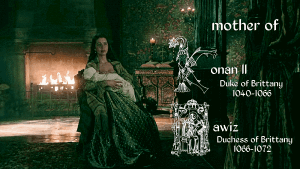



Bertha de Blois, Duchess Consort of Brittany and Countess of Maine (c. 1005-1084):
Bertha was the daughter of Odo of Blois and Ermengarde of Auvergne. She was married to Duke Alan III of Brittany in 1028. By all accounts seems to have been a successful marriage- even in charters, which historically had been fairly neutrally-worded documents, Bertha would refer to Alan in affectionate terms. With Alan, she gave birth to the future Duke Konan II and Duchess Hawiz. Her happiness was not to last however, as events would take a sharp turn.
The Bretons and Normans had historically been enemies, clashing over territory for years, and the pattern did not change in Alan’s reign. While his mother, Havoise of Normandy, had managed to form important bonds that spared Brittany war temporarily with the Normans, the peace dissolved quickly after her death. In the 1030′s, Duke Robert I had besieged the town of Dol, leading to years of raiding back and forth between the two duchies. A truce was finally settled between Robert and Alan, and the two began to work more closely politically. Several years later, Robert left for a pilgrimage to Jerusalem and left his illegitimate son as heir with Alan as his the future William I’s guardian. Not long after, Robert I died on the return journey in 1035; William became Duke of Normandy at age 8 with Alan as protector. Soon death would come for Alan as well as he fell victim to a poisoning plot, dying suddenly in 1040.
Records show that Bertha was greatly saddened by losing her husband, but also distraught- her son would be succeeding as Duke at a only a few months old, and the Breton-Norman conflict had only escalated. The Normans were not the only force she needed to contend with, however, as her brother-in-law Eozen of Penthièvre was also attempting to gain control of the Breton government through guardianship of the young Konan II. Bertha and later her son Konan would vie for power with Eozen, leading to her seeking an alliance with the County of Maine by marrying Hugh IV in 1046.
Bertha would split her time in Maine with time counseling her son in Brittany, sharing authority with Eozen. Her alliance with Maine certainly helped her position, and she had two children with Hugh, but her fortune soon ran out in 1051. Civil war broke out in Maine; Hugh had died and left Bertha widowed, and chased out of the county. Bertha and her two children by Hugh sought refuge in Brittany with her daughter and son-in-law, Hawiz and Hoël de Cornouaille. During her exile, she returned to the side of her son Konan II who was now of legal age to rule. It was likely her that influenced him to favor abbeys with strong ties to Blois-Chartres, granting him a strong ally to challenge Eozen for power. Konan occasionally visited his uncle, Count Thibault III of Chartres, often assisting him in military pursuits in the region.
The alliance with Blois-Chartres would only do so much. Konan II and Eozen went to war, and Eozen was able to call upon his own familial ally: William I of Normandy. The conflict then began to draw in the Normans and English Saxons as well. Some of the events concerning this period are depicted in the beginning of the Bayeux Tapestry. In the fall of 1066, Konan was preparing to attack Castle Gontier in Anjou, but suddenly sickened and died. Rumors spread that Konan had refused to help William conquer England because of the animosity he held from his father’s poisoning, and in retaliation William had Konan poisoned himself. Whether illness or assassination, Konan was buried by December 1066 at the age of 26. Shortly after, his sister was proclaimed duchess, beginning the ducal dynasty of Cornouaille. Following Konan’s death, Bertha returned to her home in Blois where she died in 1084.
#historyedit#bertha de blois#absolute babe#she worked so hard and had such a sad life#she outlived both of her husbands but also both konan and hawiz that's so rough ;_;#eleventh century#my edit
119 notes
·
View notes
Text
The Breton Ducal Family as Ramin Djawadi’s scores:
Konan II: White Walkers
Hawiz de Rennes: Heir to Winterfell
Hoël II: The Night King
Alan IV: The Spoils of War
Constance of Normandy: The Night is Dark
Ermengarde d’Anjou: Mhysa
Konan III: Arrival at Winterfell
Bertha de Cornouaille: Winter has Come
Eudon de Porhoët: Ironborn
Hoël of Cornwall: Reek
Konan IV: Pay the Iron Price
Margaret of Huntingdon: Winds of Winter
Constance of Brittany: Dragonstone
Geoffrey II: Choas is a Ladder
Arthur I: The Rains of Castamere
Eleonora: Jenny of Oldstones
Guy de Thouars: Oathkeeper
Alix: I am Hers, She is Mine
#twelfth century#to listen#this doesn't have a deeper meaning to GOT i have only a general idea of what goes down in that show#i just like ramin's music#it's the vibes man~
2 notes
·
View notes
Text
4e dimanche de notre itinérance de Carême : Langoat
Pour la quatrième station de notre pérégrination de Carême, nous étions réunis ce dimanche à Langoat. La messe KT a été célébrée par l'abbé Caous dans une église comble, remplie également de tous les parents des enfants catéchisés qui sont venus entourer les deux jeunes « catéchumènes » Enora et Maxence.
L'histoire de l'église Sainte Pompée de Langoat
Cette église, en schiste et granit, consacrée en 1782, remplace un édifice du XIIIe siècle. La voute, qui coiffe l'église, est décorée de panneaux de papier peint représentant les douze apôtres dans la nef, et saint Yves et saint Tugdual dans le transept nord.
Le tombeau de sainte Pompée attire toute notre curiosité. Il est érigé au XIVe siècle, en tuffeau (calcaire blanc), afin d'abriter la dépouille de Pompée (Koupaïa en breton), femme d'Hoël 1er qui règne sur la Bretagne (selon la légende), canonisée au VIe siècle, et qui est la mère de saint Tugdual, le patron de notre cathédrale, de saint Lunaire (Lenor ou Leonor) et de sainte Sève (vénérée à Morlaix). On oublie souvent que (toujours selon la légende), elle a un quatrième enfant qui régna à la suite de son père sous le nom de Hoël II. Les principales scènes de la vie de sainte Pompée sont gravées sur les trois côtés de son tombeau et un gisant en décore le couvercle.
Revoir les photos de l'église lors du pardon au mois de mai dernier : pardon de Langoat
L'homélie de l'abbé Guillaume Caous
Js 5, 9-12 / 2 Co 5, 17-21 / Lc 15, 1-32
‘Il n'a pas tenu compte de nos fautes' : la réconciliation toujours possible, elle nous attend même. Mais cette parole est inaudible pour les victimes de nos fautes, car la réconciliation vraie, vivable, implique aussi la réparation.
La réconciliation attend un fruit de conversion, comme le propriétaire du figuier dans notre évangile de dimanche dernier. Notre réconciliation doit porter du fruit si l'on veut goûter à cette joie que nous fait pressentir la parabole de ce jour.
Réparation, justice : ce vocabulaire de la réparation qui semble dépassé mais dit pourtant le désir profond d'un changement et d'une forme de compensation pour que l'ordre revienne, pour que le royaume d'amour de Jésus soit crédible, sur la terre, comme au ciel.
Cette conversion effective qu'appelle ce temps de carême prépare notre retour définitif au Père. Heureux ceux qui ne se sont jamais éloigné de la maison paternelle ! Pourtant trop souvent aigris, la vie de fils obéissant nous pèse et le péché débusqué là se tapit ici.
N'oublions pas le fils aîné qui nous ressemble souvent quand nous pensons ne rien avoir à nous reprocher. Le Seigneur nous a faits pour la joie de la communion, comme la joie familiale de notre parabole. Si la paix manque à nos vies (la paix n'exclue pas les soucis), revenons au Seigneur, mais la garantie de la paix et de la joie profonde et durable sera aussi l'humilité parfois douloureuse de la réparation.
Au cours de cette messe, Enora et Maxence ont franchi une étape vers le baptême qu'ils recevront à Pâques.
Les photos de ce dimanche : 4e dim. Carême Langoat
via Paroisse Saint-Tugdual de TREGUIER https://ift.tt/2TSgs5c
0 notes
Text
ghost-hermione replied to your post “Hoël of Cornwall: I’m perfectly capable of handling Nantes without...”
i think it's the first time i see the name of my city on tumblr and it is weird?? also NANTES WILL NOT BE HANDLED
funnily enough, “Nantes will not be handled,” is probably what got yelled at him right before Henry II’s little brother decked him in the face
#hoël gets a#gold star with comic sans letters for trying#you're 100% right nantes apparently will not be handled#ghost-hermione
0 notes